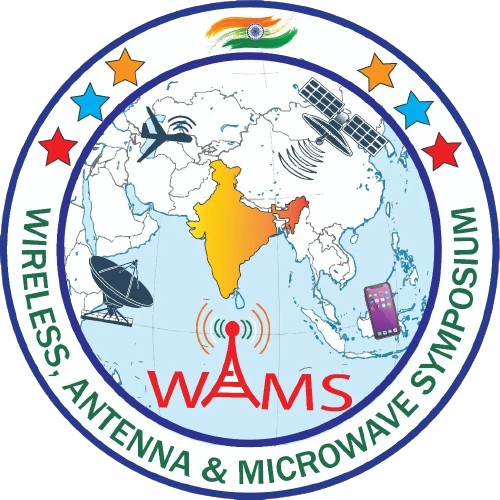



Wireless, Antenna & Microwave Symposium
WAMS 2025
June 5-8, 2025
Organized by
Indian Institute of Information Technology, Design and Manufacturing
Kancheepuram, Chennai
Kancheepuram, Chennai
SHOWCASE YOUR INNOVATION AND COMPETE WITH THE BEST AT THE WAMS PROJECT CONTEST ---- WHERE IDEAS MEET EXCELLENCE.
Round 1:
- Register for the contest through the provided link.
- Submit your one-page summary/abstract which includes the project’s objectives, methodology and expected outcomes on the provided theme.
Round 2:
- The shortlisted team should present their work within 10 (8+2) minutes. (Strictly limited to 15 slides).
- *Note: Shortlisted teams from round 1 will have to register for the conference to present their work.
PARTICIPATION RULES
- Each college can send up to 2 teams.
- Each team must consist of 3 members and be mentored by a professor from their college.
- Undergraduate students are only allowed to apply.
- Work should be related to the theme provided.
| PROBLEM STATEMENTS |
- Design a Wi-Fi network for a university campus having 1000 students, 300 faculty and staff, and an estimated 4000 devices during peak usage hours, ensuring coverage and capacity requirements as follows:
- Capacity: Support 1,500 simultaneous connections in high-density areas such as lecture halls, cafeterias, and auditoriums, with a minimum throughput of 5 Mbps per user.
- Coverage: Ensure 90% indoor coverage across key areas such as classrooms, labs, auditoriums, libraries, and offices.
- Design a wireless channel model for an urban environment and include the following:
- Sampling rate – Assume a system bandwidth of 20 MHz
- Path delays – Include 6 multipath components to represent reflections and scatterings in an urban environment
- Average Path gains
- Maximum Doppler Shift-Provide models for both high-mobility (e.g., vehicles) and low-mobility
3. Design a triple band/quad-band microstrip/SIW antenna for Sub 6GHz frequency with the following specifications
- Gain 6dBi or more at all the bands.
- Front to Back ratio more than 18dB
- Return loss better than 15dB at all the resonance frequencies.
- Each resonance frequency bandwidth > 200MHz.
4. Design a SIW based Bandpass filter for C/X band radars
- |S11| better than 20dB
- Insertion loss less than 1dB
- Compact size
- Filter roll-off rate to be greater than 50dB/octave
5. Design a triple/quad-band equal split 1:2 power divider for C/X band frequency
- Return loss should be better than 20dB
- Isolation between output arms should be greater than 18dB
- Insertion loss should be less than 4dB.
Winners will be awarded with a cash prize.
Shortlisted candidates can apply for travel grants.
Free Hostel accommodation will be provided for the shortlisted candidates.
Shortlisted candidates can apply for travel grants.
Free Hostel accommodation will be provided for the shortlisted candidates.
| Student Activities Organizing Committee |
- Ms. S. Keerthipriya
- Dr. Gaurangi Gupta
- Dr. N. C. Pradhan
- Ms. I. Surya Rajitha
- Ms. Sai Harshini
- Mr. Avinash Choudhary